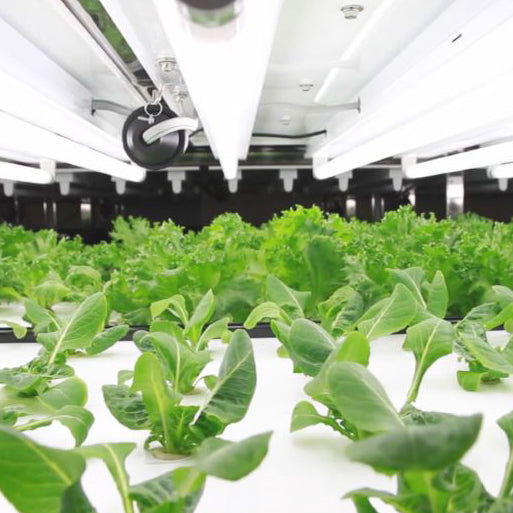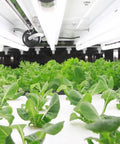
The history of farming is as old as the history of civilization itself. Like civilization, farming changes as it progresses with new and more effective developments. The latest major innovation has been the revolution of indoor farming. Here’s what you need to know about how Agtech is revolutionizing the way we grow and consume food.
From Ancient Fields to Plant-Skyscrapers


The earliest signs of humans engaging in agriculture have been traced to Israel on the shores of the Sea of Galilee nearly 23,000 years ago. From those ancient shores, farming has taken a new and exciting direction, towards automated indoor farms housed in warehouses and city skyscrapers.
From its simple beginnings, outdoor farming has come to be unsustainable and unhealthy. Produce is sucking up unsustainable quantities of water, smothered in pesticides and hauled from thousands of miles away. That’s not sustainable, but indoor farming is, here’s why.
Better for the Environment
Indoor farming is markedly more efficient than traditional methods in terms of production. Not only is it more productive, but it’s also lighter on the environment. Indoor farming uses considerably less water than traditional outdoor farming methods. The superior technology of indoor farming makes it possible to use only the necessary amount of water to nourish produce rather than irrigating thousands of gallons into fields.
The distance that food travels carries a substantial environmental impact as well. From the remote countryside into cities, the carbon emissions produced from hauling produce hundreds to thousands of miles away is staggering. When food is produced in near the area of consumption, those carbon emissions are cut down to next to nothing. An added benefit is the social cohesion that comes from producing food in one’s own city.
The Superior Efficiency of Indoor Farming

Indoor farming has several strong advantages over traditional methods in terms of efficiency:
Energy Conservation

LED lights offer incredible value in terms of both energy efficiency and control. With other powerful technologies like AI, machine learning, and weather simulators, outdoor farming simply can’t compete with the robust efficiency of indoor vertical agriculture.
No Seasonality

In addition to being more sustainable, indoor farming offers the lucrative possibility of growing food year-round which contrasts sharply with the limited seasonal production of traditional agriculture.
Reliable Harvests

Outdoor farming is subject to the whims of the weather and entire crops can be lost due to lack of rain or sun. With indoor farming, all of that can be controlled, from humidity, light, and nutrients; all of it can be managed without worrying about the vicissitudes of Mother Nature.
No Pesticides or Herbicides

Another compelling advantage of indoor farming is that it has the potential to virtually eliminate the threat of bugs. Insects can devastate crops in an open field, but not so much in a controlled indoor environment.
Reduced Labor Costs

Indoor farming significantly cuts cost on labor needed to tend to the farm. A survey conducted by the California Farm Bureau Federation found that 56% of farmers were unable to hire all the employees they needed at some point in the last 5 years. With robots handling planting, logistics, and harvesting, both the time and money savings are huge.
Freshness

The rate of importation for fruits and vegetables has been steadily rising that should be concerning to all. Over 30% of fruits and vegetables in the U.S. are currently imported, taking nearly 2 weeks before they actually hit the grocery store shelves.
Feeding the World with Indoor Farming
While traditional farming methods have fed the world for thousands of years, vital resources have been mismanaged. The amount of water being used to grow enough food to supply sufficient nutrients for the Earth’s growing population is astronomical and unsustainable.
Moving food production from the countryside and into the city has many attractive advantages that will ultimately prove to be more sustainable in the long run. While the costs of setting up and running an indoor farm currently exceed the costs of traditional farming, the market will adjust in time. As water and nutrient-rich land becomes more precious, the market will tip in favor of indoor farming because of its efficiency and sustainability.

Needless to say, indoor farming has risen from being a fanciful thought to the forefront of the future of agriculture. Indoor farming supports the environment and strengthens communities.
Choosing indoor grown produce will soon evolve from a futurist option to a necessity, your "farmtown" may become a plant sky-scraper filled city soon enough.








